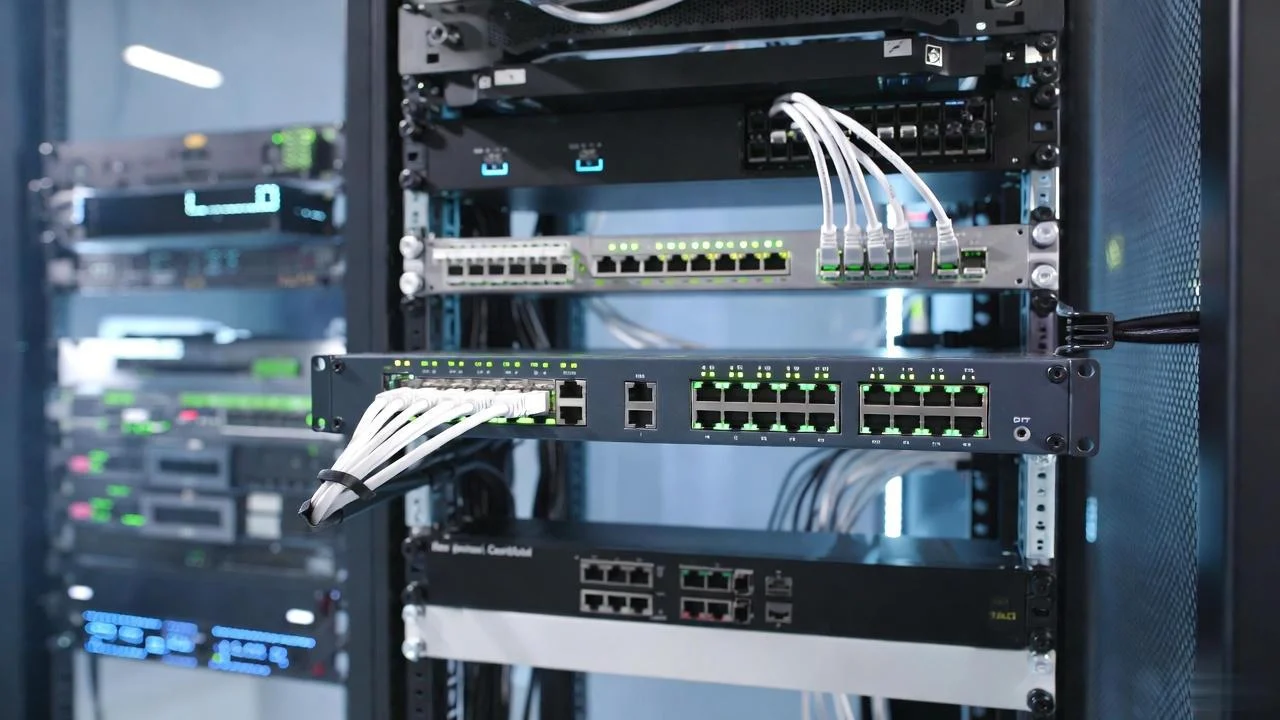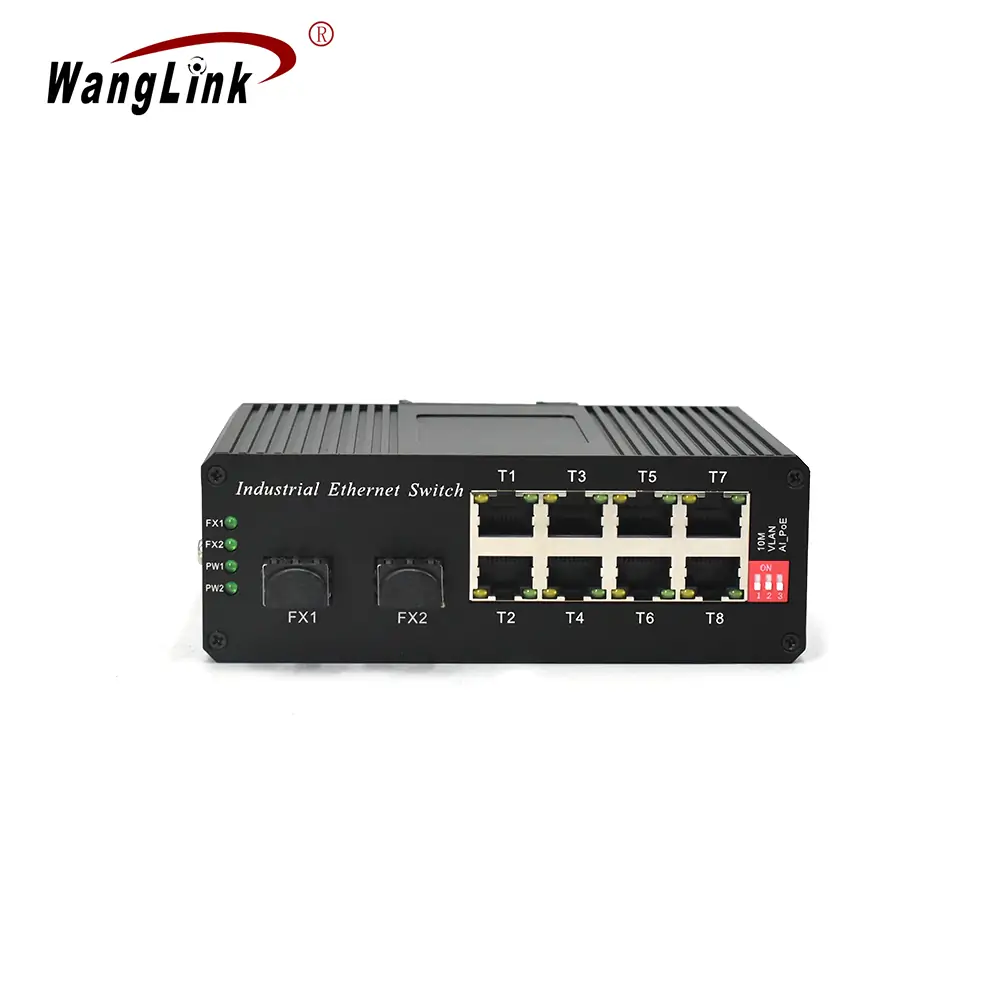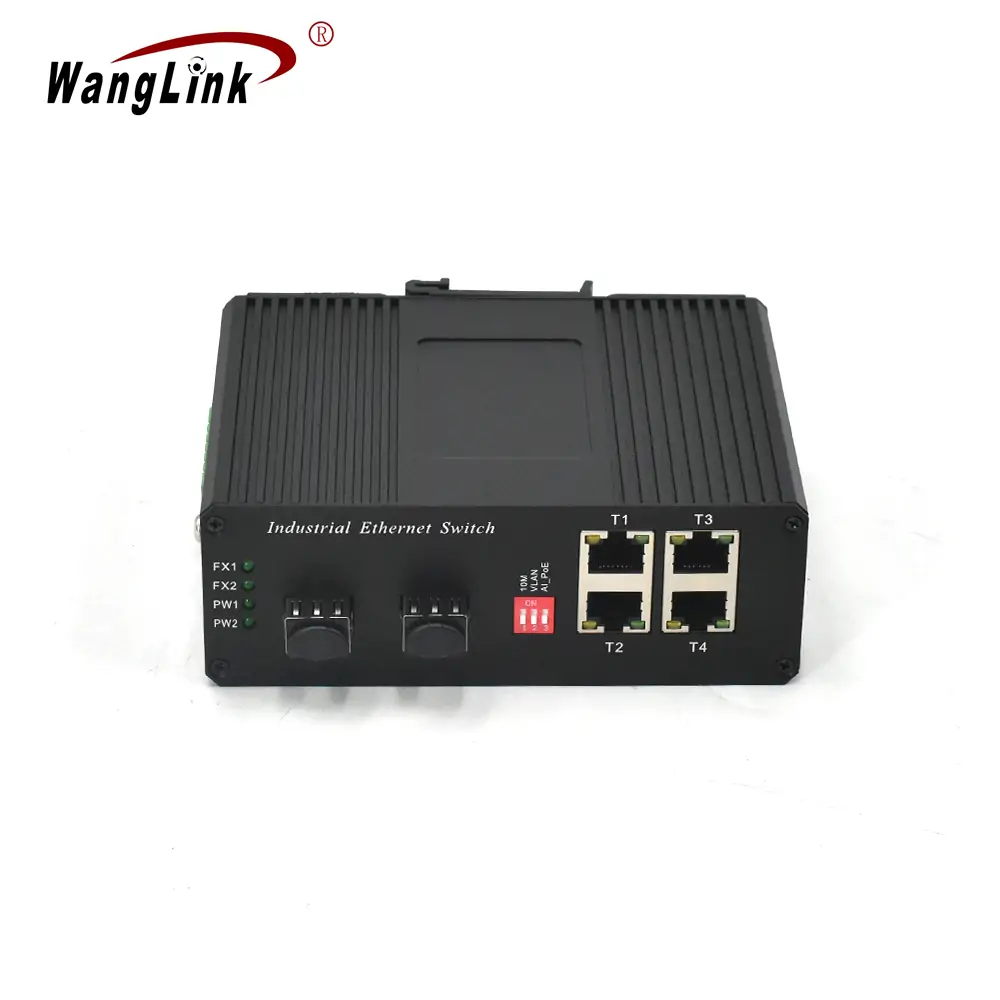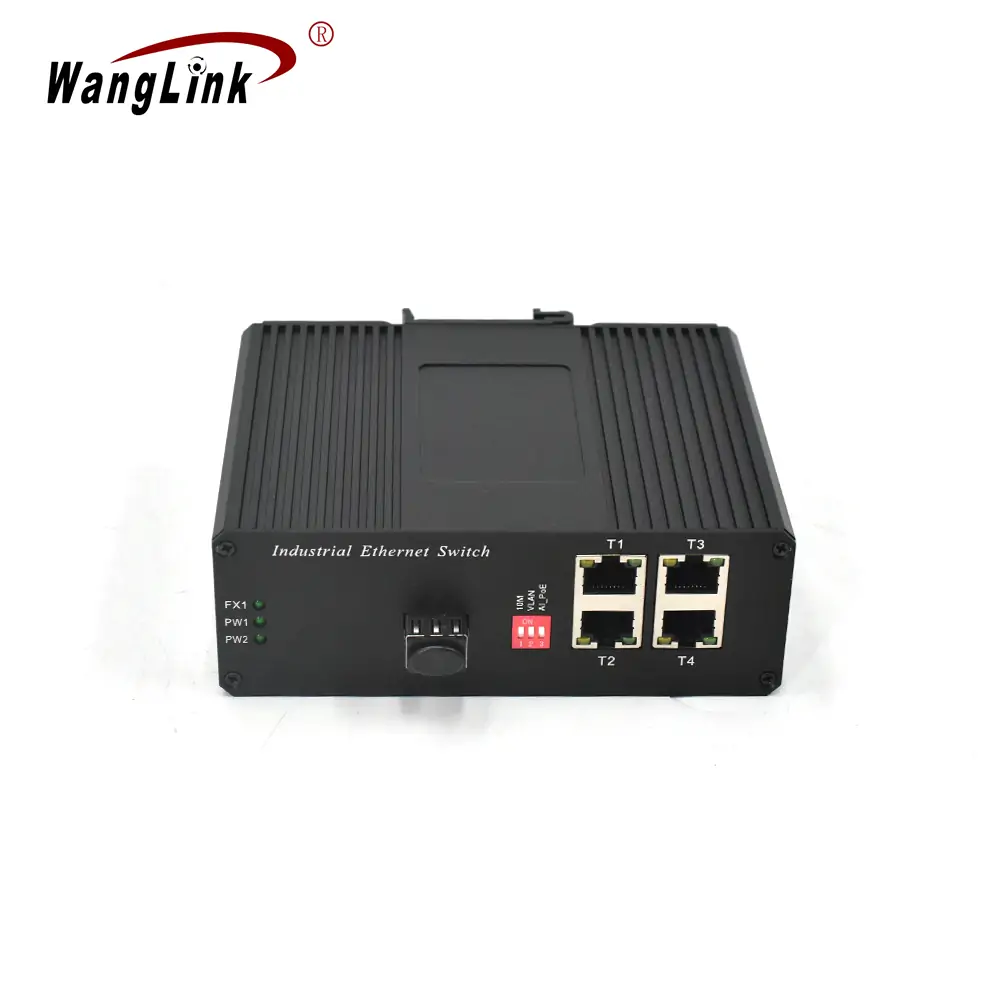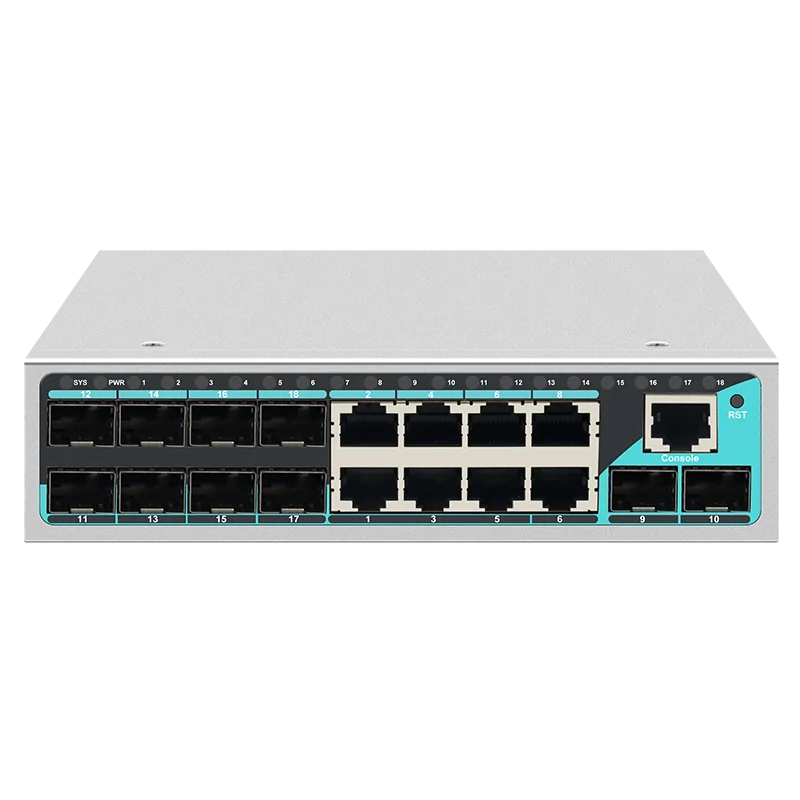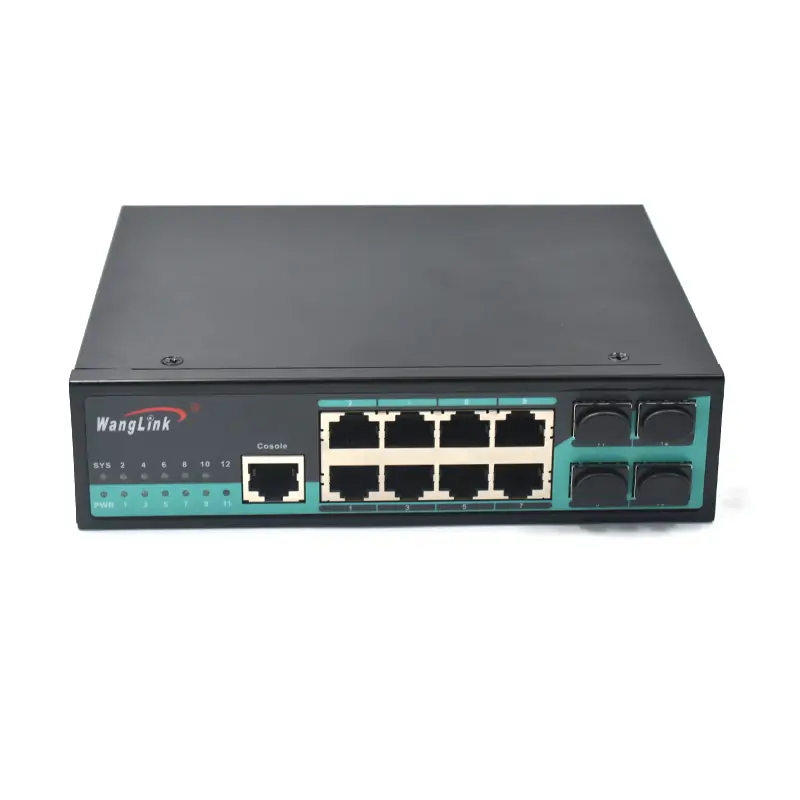Single Pair Ethernet Switch: The Future of Industrial Networking and IoT Connectivity
The networking landscape is rapidly evolving, and at the forefront of this transformation is the single pair ethernet switch technology. As industries embrace digital transformation and IoT connectivity becomes increasingly critical, understanding SPE switches has become essential for network engineers, system integrators, and industrial automation professionals.

What is Single Pair Ethernet (SPE) Technology?
Single Pair Ethernet represents a paradigm shift in network connectivity, utilizing just one pair of wires to transmit data, power, and communication signals. Unlike traditional Ethernet that requires four pairs of wires, SPE technology simplifies installation while maintaining robust performance standards.
Key Characteristics of SPE Switches
SPE switches offer several distinctive features that set them apart from conventional networking equipment:
- Simplified Cabling: Uses only two wires instead of eight
- Power and Data Integration: Combines power delivery with data transmission
- Extended Reach: Supports longer cable runs up to 1000 meters
- Cost Efficiency: Reduces material and installation costs
- Compact Design: Smaller form factor for space-constrained environments
Technical Specifications and Standards
IEEE Standards for Single Pair Ethernet
The development of SPE technology follows strict IEEE standards to ensure interoperability and performance consistency:
| Standard | Speed | Distance | Application |
|---|---|---|---|
| IEEE 802.3cg (10BASE-T1L) | 10 Mbps | Up to 1000m | Industrial IoT, Process Automation |
| IEEE 802.3bp (1000BASE-T1) | 1 Gbps | Up to 15m | Automotive, High-Speed Industrial |
| IEEE 802.3bw (100BASE-T1) | 100 Mbps | Up to 15m | Automotive Networks |
Power Delivery Capabilities
Modern single pair ethernet switches incorporate Power over Data Line (PoDL) technology, enabling:
- Class 0: Up to 0.5W power delivery
- Class 1: Up to 1.6W power delivery
- Class 2: Up to 3.2W power delivery
- Class 3: Up to 6.0W power delivery
- Class 4: Up to 12.0W power delivery
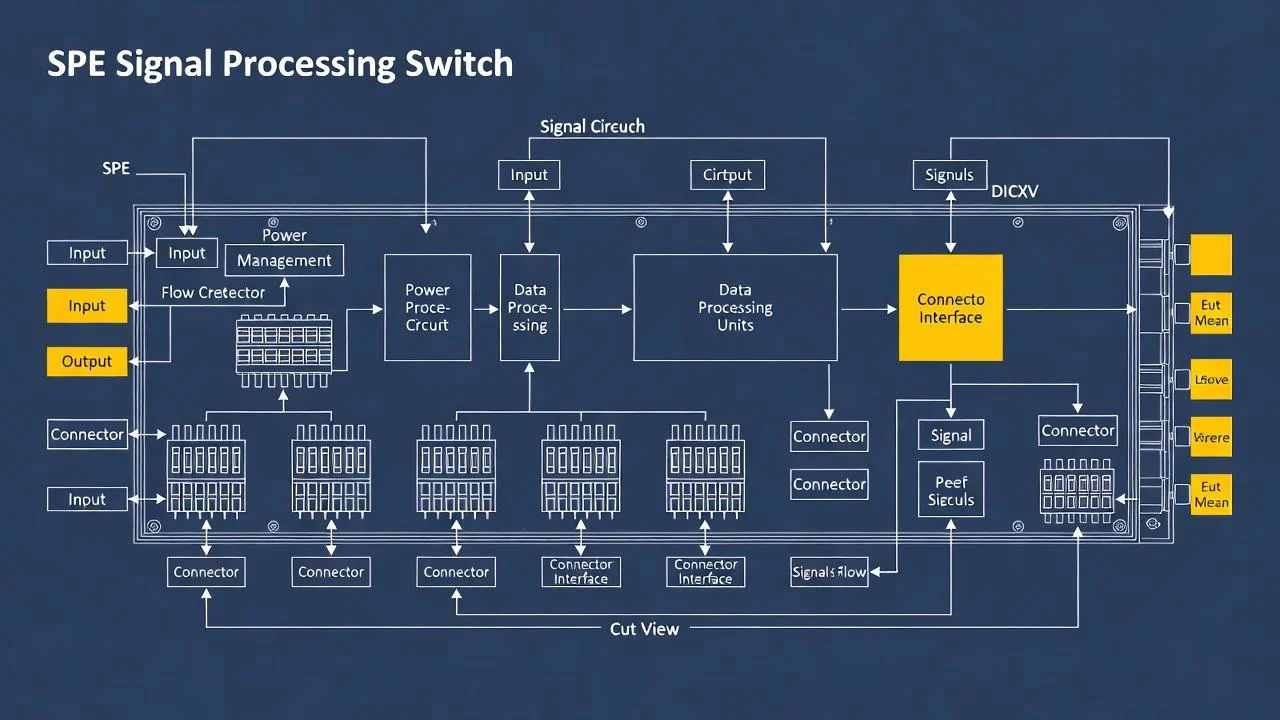
Applications and Use Cases
Industrial Automation and Manufacturing
Single pair ethernet switches excel in industrial environments where traditional cabling becomes impractical:
Process Control Systems
- Temperature and pressure sensors
- Flow meters and level indicators
- Actuator control and feedback systems
- Safety monitoring devices
Factory Automation
- Robotic control systems
- Conveyor belt monitoring
- Quality control cameras
- Environmental sensors
Building Management and Smart Infrastructure
SPE technology transforms building automation by enabling:
- HVAC Control Systems: Simplified wiring for temperature sensors and control units
- Lighting Management: Smart lighting controls with integrated power and data
- Security Systems: IP cameras and access control devices
- Energy Monitoring: Smart meters and consumption tracking devices
Transportation and Automotive Networks
The automotive industry has embraced SPE switches for:
- In-Vehicle Networks: Connecting sensors, cameras, and control units
- Autonomous Vehicle Systems: High-speed data transmission for LIDAR and radar
- Electric Vehicle Charging: Communication between charging stations and vehicles
- Traffic Management: Smart traffic lights and monitoring systems
Case Study: Smart Manufacturing Implementation
Project Overview: Automotive Parts Manufacturing Facility
Client: Global automotive parts manufacturer
Challenge: Modernize legacy factory network infrastructure
Solution: Implementation of SPE switch network architecture
Implementation Details
The client faced significant challenges with their existing network infrastructure:
- Complex Cabling: Traditional Cat5e/Cat6 cables created installation bottlenecks
- Power Requirements: Separate power cables for sensors increased costs
- Maintenance Issues: Multiple cable types complicated troubleshooting
- Scalability Limitations: Difficulty adding new monitoring points
SPE Switch Solution Architecture
Wanglink designed a comprehensive SPE switch solution featuring:
Network Topology:
- Central SPE aggregation switches in main distribution panels
- Edge SPE switches for local device clusters
- Redundant uplink connections for critical systems
- Integrated power management for all connected devices
Device Integration:
- 150+ temperature sensors across production lines
- 75 vibration monitoring devices on critical machinery
- 50 IP cameras for quality control and security
- 25 environmental monitoring stations
Results and Benefits
The SPE switch implementation delivered measurable improvements:
| Metric | Before SPE | After SPE | Improvement |
|---|---|---|---|
| Installation Time | 8 hours per connection | 2 hours per connection | 75% reduction |
| Cable Cost | $45 per connection | $12 per connection | 73% savings |
| Power Consumption | 150W per switch | 95W per switch | 37% reduction |
| Maintenance Time | 4 hours per issue | 1 hour per issue | 75% reduction |

Selecting the Right Single Pair Ethernet Switch
Key Selection Criteria
When choosing an SPE switch for your application, consider these critical factors:
Performance Requirements
- Data Rate Needs: Determine required bandwidth (10 Mbps to 1 Gbps)
- Latency Sensitivity: Consider real-time application requirements
- Distance Requirements: Evaluate maximum cable run distances
- Device Count: Calculate total connected device requirements
Environmental Considerations
- Operating Temperature: Industrial vs. commercial temperature ranges
- Humidity and Moisture: IP rating requirements for harsh environments
- Vibration and Shock: Mechanical stress tolerance
- Electromagnetic Interference: EMI/EMC compliance needs
Power Management Features
- PoDL Support: Required power classes for connected devices
- Power Budget: Total power delivery capacity
- Efficiency Ratings: Energy consumption optimization
- Backup Power: Redundancy and failover capabilities
Wanglink SPE Switch Advantages
As a leading ethernet switch manufacturer, Wanglink offers comprehensive SPE solutions:
Customization Capabilities
- PCBA Design: Custom circuit board layouts for specific applications
- Enclosure Options: Various form factors and mounting configurations
- Connector Types: Multiple interface options including proprietary connectors
- Software Features: Custom firmware and management interfaces
Quality Assurance
- 13+ Years Experience: Proven track record in network equipment manufacturing
- Rigorous Testing: Comprehensive quality control processes
- Certification Compliance: Full regulatory and standards compliance
- Reliability Standards: Industrial-grade components and design
Advanced SPE Switch Features
Network Management and Monitoring
Modern single pair ethernet switches incorporate sophisticated management capabilities:
SNMP Integration
- Real-time performance monitoring
- Automated fault detection and reporting
- Historical data collection and analysis
- Integration with existing network management systems
Security Features
- Port-based access control
- VLAN segmentation capabilities
- Encryption support for sensitive data
- Authentication and authorization protocols
Redundancy and Reliability
Critical applications require robust failover mechanisms:
- Ring Topology Support: Automatic recovery from cable breaks
- Dual Power Inputs: Redundant power supply connections
- Hot-Swappable Components: Maintenance without system downtime
- Environmental Monitoring: Temperature and humidity sensing
Future Trends and Developments
Emerging SPE Technologies
The single pair ethernet switch market continues evolving with new innovations:
Higher Speed Standards
- Development of 2.5 Gbps and 5 Gbps SPE standards
- Multi-gigabit capabilities for bandwidth-intensive applications
- Backward compatibility with existing installations
Enhanced Power Delivery
- Higher power classes for demanding devices
- Intelligent power management and optimization
- Dynamic power allocation based on device requirements
Integration with Edge Computing
- Built-in processing capabilities for local data analysis
- AI/ML acceleration for real-time decision making
- Reduced latency through edge processing
Market Growth Projections
Industry analysts predict significant growth in SPE adoption:
- Industrial IoT: 35% annual growth through 2028
- Smart Buildings: 28% market expansion expected
- Automotive Applications: 42% growth in SPE implementations
- Process Industries: 31% adoption rate increase
Implementation Best Practices
Planning and Design Considerations
Successful SPE switch deployment requires careful planning:
Network Architecture Design
- Topology Planning: Star, ring, or hybrid configurations
- Bandwidth Allocation: Traffic analysis and capacity planning
- Power Budget Calculation: Total power requirements assessment
- Scalability Planning: Future expansion considerations
Installation Guidelines
- Cable Management: Proper routing and protection
- Grounding Requirements: Electrical safety and EMI mitigation
- Environmental Protection: Appropriate enclosures and sealing
- Documentation Standards: Comprehensive labeling and documentation
Testing and Validation
Comprehensive testing ensures optimal performance:
Performance Testing
- Throughput Verification: Data rate and latency measurements
- Power Delivery Testing: PoDL functionality validation
- Environmental Testing: Temperature and humidity stress tests
- Reliability Testing: Long-term operation validation
Frequently Asked Questions (FAQ)
What is the main advantage of single pair ethernet switches over traditional switches?
Single pair ethernet switches offer significant advantages including simplified cabling (using only two wires instead of eight), integrated power and data transmission, reduced installation costs, and extended cable run distances up to 1000 meters. This makes them ideal for industrial IoT applications where traditional Ethernet cabling becomes impractical or cost-prohibitive.
Can SPE switches work with existing network infrastructure?
Yes, SPE switches can integrate with existing network infrastructure through uplink ports that support traditional Ethernet standards. This allows for gradual migration to SPE technology while maintaining compatibility with current systems. Wanglink offers customization services to ensure seamless integration with your existing network architecture.
What power levels can SPE switches deliver to connected devices?
Modern SPE switches support Power over Data Line (PoDL) with various power classes ranging from 0.5W (Class 0) up to 12W (Class 4). The specific power delivery depends on the switch model and connected device requirements. Higher power classes are being developed to support more demanding applications.
How do I determine the right SPE switch for my application?
Consider factors such as required data rates (10 Mbps to 1 Gbps), maximum cable distances, number of connected devices, power requirements, environmental conditions, and management features. Wanglink’s technical team can provide consultation to help select the optimal solution for your specific needs. Contact us at [email protected] for personalized recommendations.
Are SPE switches suitable for outdoor installations?
Yes, many SPE switches are designed for harsh environmental conditions with appropriate IP ratings for outdoor use. Features include extended temperature ranges, moisture protection, and robust enclosures. Industrial-grade SPE switches can operate in temperatures from -40°C to +85°C and withstand vibration, shock, and electromagnetic interference.
What is the maximum distance for SPE cable runs?
SPE technology supports various distance capabilities depending on the standard: IEEE 802.3cg (10BASE-T1L) supports up to 1000 meters, while higher-speed standards like 1000BASE-T1 support up to 15 meters. The choice depends on your specific bandwidth and distance requirements.
How does SPE switch pricing compare to traditional Ethernet switches?
While SPE switches may have higher initial unit costs, the total cost of ownership is typically lower due to reduced cabling costs, simplified installation, and integrated power delivery. The elimination of separate power cables and reduced installation time often results in 40-60% savings in overall project costs.
Conclusion
Single pair ethernet switches represent a transformative technology that addresses the evolving needs of industrial networking and IoT connectivity. With their simplified cabling, integrated power delivery, and robust performance characteristics, SPE switches are becoming the preferred choice for modern industrial applications.
As a trusted network equipment supplier with over 13 years of manufacturing experience, Wanglink is committed to delivering high-quality SPE solutions that meet the demanding requirements of industrial environments. Our comprehensive product portfolio and customization capabilities ensure that you receive the optimal solution for your specific application needs.
The future of industrial networking lies in simplified, efficient, and scalable solutions. By embracing single pair ethernet switch technology, organizations can build robust, cost-effective networks that support their digital transformation initiatives while preparing for future technological advances.
For more information about Wanglink’s SPE switch solutions or to discuss your specific requirements, contact our technical team at [email protected] or WhatsApp: +8613544167258. Visit our knowledge base for additional technical resources and industry insights.
